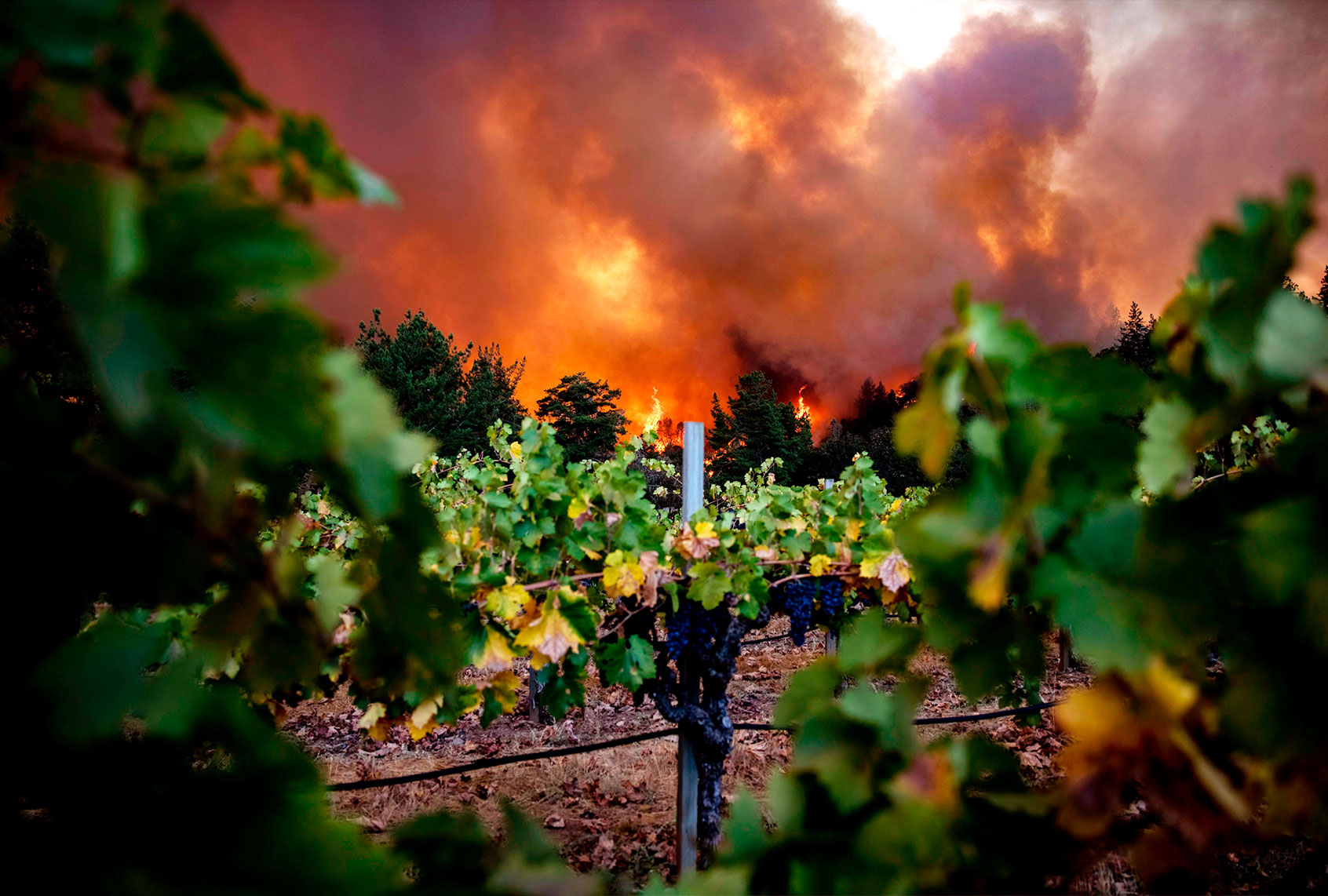Most American wine-lovers feel a connection to California wines, widely considered to be on par with the esteemed vineyards of France and Italy in terms of quality. So the wildfire destruction of much of California’s wine country may feel particularly personal: earlier this week, the Glass Fire in Northern California’s Napa and Sonoma Counties led to tens of thousands of people being evacuated as it demolished vineyards and spewed ash on grape crops. The scale of the devastation raises questions about the ongoing viability of a vital California industry that has previously weathered droughts, earthquakes, floods, and the higher temperatures that emerged from climate change.
“The impact of the smoke from the fires is huge,” Molly Hodgins, Vineyard Coordinator and Instructor at Napa Valley College, told Salon by email. One of the major problems, Hodgins said, was “smoke taint” — which occurs when volatile phenol compounds from smoke bind to sugars in grape skins. Hodgins said they have an effect on taste.
“When juice is fermented on the skins, as it is in red wines. . . . some of these bonds are broken and the smoky compounds become free, at which point most people can smell and taste them,” Hodgins explained. “They are unpleasant at relatively low levels, like a wool sweater that you wore to a bonfire or the contents of an ashtray in your wineglass.” Hodgins says white wines were slightly less affected by wildfire smoke “because they are not fermented on the skins, but they are not necessarily in the clear either.”
She added, “There has been so much smoke exposure in wine regions up and down the west coast this year that most of the 2020 red wines will have some smoke taint. Napa has been getting socked in with smoke from local fires and from fires a couple hundred miles away. Many wineries are refusing to even pick smoke-tainted grapes, which makes them an insurance claim for the grower if they have crop insurance. So growers are taking a hit and wineries are looking at a missing or very light vintage for many wines.”
Dr. S. Kaan Kurtural, a specialist in viticulture at the University of California – Davis, said that the environmental calculus had shifted with climate change.
“The ecological challenges have been known for a while and we have initially benefited from it,” Kurtural wrote to Salon. “As our climate got warmer (growing season mean temperature) we were able to make more fruit for wine, and grow a lot of it. Now it has passed a tipping point.”
Kurtural said that by the middle of the century, the climate conditions will drastically change how they grow wine in California, and how much they’re able to grow.
“The incidence of extreme events, such as heat waves, is increasing with an associated risk for crops,” he added.
Kurtural said climate change was expected to affect rainfall patterns, too. “Higher temperatures are associated with greater rates evaporation of water and therefore, higher global precipitation. However, these are unevenly distributed. In fact, most regions where grapevines are grown are forecasted to experience a reduction in cloud coverage and rainfall and an increase in solar radiation reaching the earth’s surface. As much as we would like to believe we are special, we are on the same planet and these changes have impacted this industry.”
Anita Oberholster, associate specialist in cooperative extension of viticulture and enology at the University of California – Davis, told Salon that while the future of the industry is “very difficult to predict,” she felt that “we can safely say this has been the most devastating [wildfires] in recent history. The fact that we have now had several major fires in all our major wine grape growing regions and the fact that fires started when only about 10% of the grapes have been harvested. How much fruit will not be harvested is difficult to estimate.”
She added, “Not all vineyards that saw smoke will be impacted. The highest risk are those that were exposed to fresh dense smoke (less then 24 hours old). But this combined with COVID-19, probably makes this the most challenging year for the grape and wine industry in the last couple of decades.”
Sally Murdoch, communications manager at Oregon Wine Board, told Salon that the industry is trying to come up with management strategies for both wildfires and climate change going forward.
“This season’s series of wildfires is bigger than the Oregon wine industry, as the issues are similarly affecting a wide range of farm crops up and down the west coast; the fire impact cuts across all agricultural sectors and business and people,” Murdoch explained. “While it’s too early to tell the damage to crops or grapes specifically, people are being evacuated and safety is the priority to the wine industry.”
She noted that researchers from the three continental west coast states are outlining a “comprehensive, three-state smoke impact research project which will be submitted soon to USDA for Specialty Crop Research Initiative funding.”
Oberholster also said that wine producers will need to account for climate change going forward.
“For the next few years there are ways to combat climate change — in the sense of higher temperatures and limited water — by conserving water, re-using wastewater, protecting grapes against heat and working longer term on rootstocks and varieties with higher heat tolerance and more drought tolerance,” Oberholster explained. “As far as fires go, better management of fuel sources, looking at barrier sprays to protect grapes against smoke, improved treatment options for wines that are impacted, better insurance options, better risk assessment.”
“We are applying for grants to try and link atmospheric data to smoke exposure risk data in vineyards,” she added.

